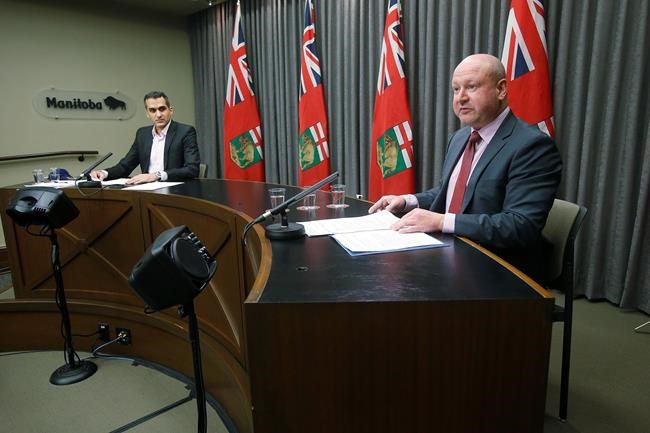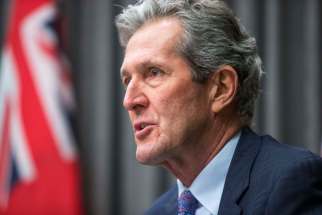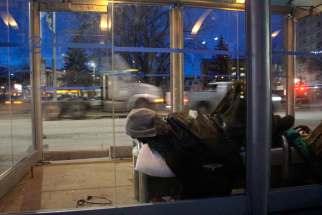Pandemic playbook missing all its pages
Read this article for free:
or
Already have an account? Log in here »
To continue reading, please subscribe:
Monthly Digital Subscription
$0 for the first 4 weeks*
- Enjoy unlimited reading on winnipegfreepress.com
- Read the E-Edition, our digital replica newspaper
- Access News Break, our award-winning app
- Play interactive puzzles
*No charge for 4 weeks then price increases to the regular rate of $19.00 plus GST every four weeks. Offer available to new and qualified returning subscribers only. Cancel any time.
Monthly Digital Subscription
$4.75/week*
- Enjoy unlimited reading on winnipegfreepress.com
- Read the E-Edition, our digital replica newspaper
- Access News Break, our award-winning app
- Play interactive puzzles
*Billed as $19 plus GST every four weeks. Cancel any time.
To continue reading, please subscribe:
Add Free Press access to your Brandon Sun subscription for only an additional
$1 for the first 4 weeks*
*Your next subscription payment will increase by $1.00 and you will be charged $16.99 plus GST for four weeks. After four weeks, your payment will increase to $23.99 plus GST every four weeks.
Read unlimited articles for free today:
or
Already have an account? Log in here »
Hey there, time traveller!
This article was published 02/02/2021 (1777 days ago), so information in it may no longer be current.
Manitoba public health officials would like nothing better than to have a pandemic manual they could share with residents, showing precisely how they make decisions on COVID-19 restrictions.
It would get them off the hook in the face of growing criticism they’re refusing to be transparent when it comes to lockdowns and reopening plans.
Trouble is, no such manual exists.
There are no stacks of epidemiological analysis hidden away that show exactly where and how people were infected with the SARS-CoV-2 virus. There are no classified documents that use such data to determine in advance which sectors of the economy will reopen and what should remain shuttered.
If there were, it would be in the best interest of government to release them to justify its actions, given the controversy around lockdowns and the unintended harm they cause.

It’s impossible to know where most people acquired their infections, as contact tracing only provides some insight.
When all members of a household test positive for COVID-19, for example, it’s almost certain they got it from each other. When several infected people are tied to a specific gathering (such as a church service or house party), there’s a strong likelihood they acquired the virus at that event.
But when community transmission runs rampant, as it has in Manitoba, public health officials don’t know where at least half of reported infections occur.
Contact tracers may determine an infected person was in a particular store, on a bus, or in a bar — but it doesn’t usually tell them where the infection occurred.
Public health officials rely mostly on scientific literature to determine how respiratory viruses, such as SARS-CoV-2, are transmitted. They don’t have nearly as much site-specific data as some may believe.
What they do know is the novel coronavirus spreads mostly through large droplets people emit (sometimes smaller ones that can linger indoors for longer periods) and through physical contact, such as hand-shaking.
When people gather indoors for prolonged periods, the risk of transmission is high, especially when they’re not wearing face masks. You don’t need site-specific data to tell you there’s a high likelihood of spread in bars and restaurants (where people are in close contact for an hour or more without masks) when the test positivity rate is more than 10 per cent.
These are not all data-driven, science-based decisions. They can’t be. It’s a mix of science, economics, sociology, psychology and politics.
Public health officials also don’t use a predetermined set of metrics to decide when and how to ease restrictions. As much as Manitobans would like to know how far case numbers and hospitalizations have to fall to fully reopen the economy, there are far too many variables at play to decide that in advance.
The Alberta government released some criteria last week to guide its reopening plan. Premier Jason Kenney set a four-stage schedule based largely on hospital benchmarks.
When the number of COVID-19 patients in hospital falls below 600 (as it did recently), restaurants and fitness centres will reopen. When hospitalizations fall below 450, more retail can open and banquet halls can host events again. Stages 3 and 4 are triggered when hospitalizations fall below 300 and 150, respectively.
It may seem like a clear set of guidelines people can follow, but it’s mostly a public relations exercise.
No government is going to make reopening decisions based on hospitalization numbers alone (as important as those figures are). Multiple factors — including case numbers, test-positivity rates, average number of close contacts, new variants, outbreaks, and community transmission — will be considered.
Even Kenney said reaching hospital benchmarks only means government “may” allow some reopenings.
These are not all data-driven, science-based decisions. They can’t be. It’s a mix of science, economics, sociology, psychology and politics.
Sometimes, it’s a leap of faith based on the best available information. In the end, these are judgment calls made in real time.
There is no playbook. It’s futile to ask for one.
tom.brodbeck@freepress.mb.ca

Tom has been covering Manitoba politics since the early 1990s and joined the Winnipeg Free Press news team in 2019.
Our newsroom depends on a growing audience of readers to power our journalism. If you are not a paid reader, please consider becoming a subscriber.
Our newsroom depends on its audience of readers to power our journalism. Thank you for your support.
History
Updated on Wednesday, February 3, 2021 8:02 AM CST: Fixes typo







